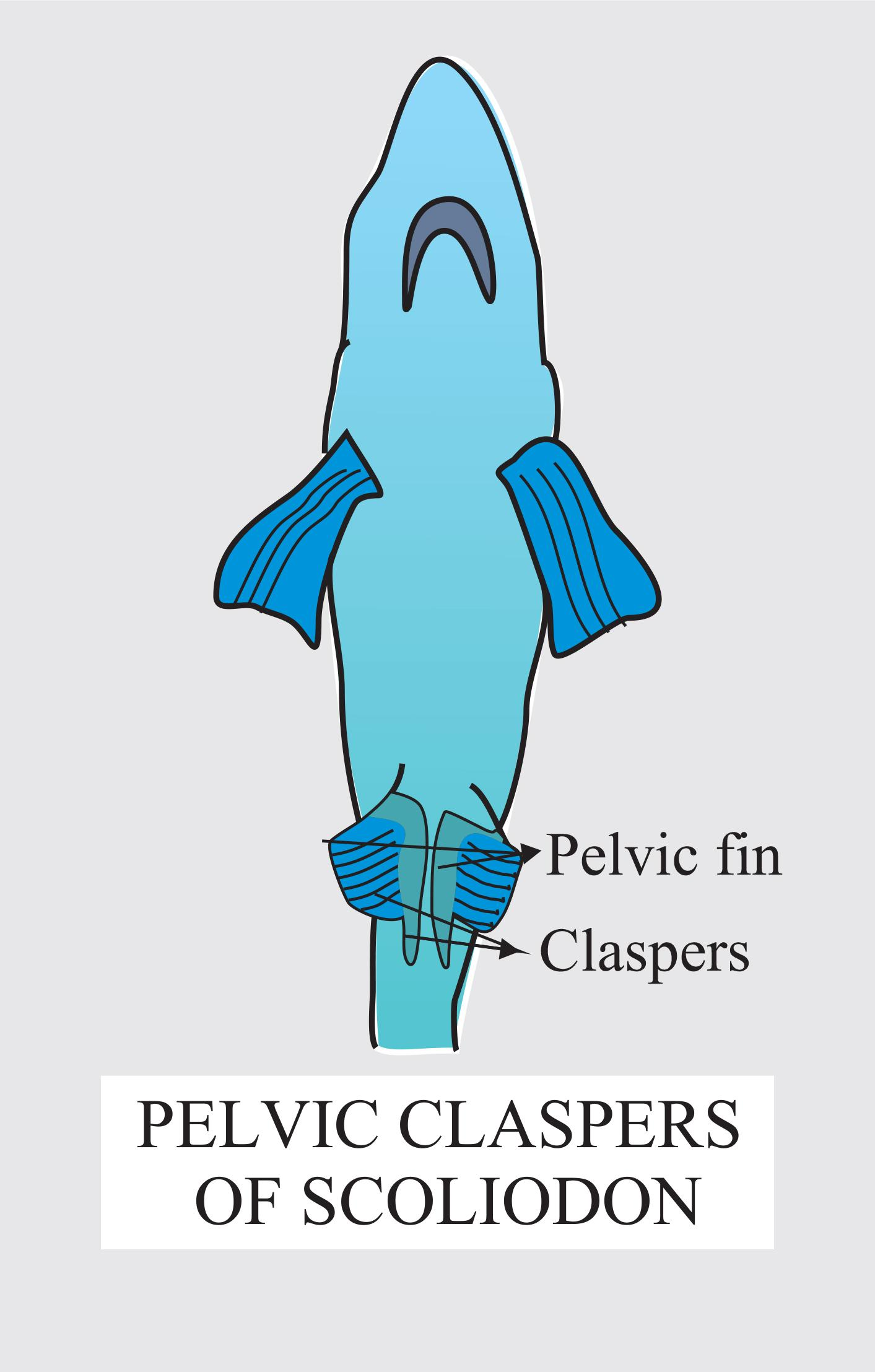
Pelvic claspers are found in
A) Labeo
B) Scoliodon
C) Anabas
D) Salmon
Answer
543.9k+ views
Hint: Pelvic claspers are an organ characteristic of a type of fish. As the name suggests, the location of these parts is in the pelvic area and therefore may have an important part in reproduction, as that is where the reproductive organs are located in these species.
Complete answer:
- Pelvic claspers are grooved organs developed in male sharks for the purpose of copulation. They are present along the inner margin of each pelvic fin. They deposit sperm in the genital duct of receptive female sharks. Hence, they are present in the Scoliodon.
- The sperm is channeled into the female cloaca during mating.
- The claspers are heavily calcified during puberty for successful copulation. The degree of calcification and the size of the claspers are used to study the sexual development in male cartilaginous fish.
- Juvenile fish have uncalcified claspers, sub-adults have partially calcified claspers, and adults have fully calcified claspers.
Additional information:
- Scoliodon species reside in the ocean, while Labeo resides in freshwater. Anabas resides in either fresh or brackish water, while the salmon alternates between freshwater and oceans throughout its life.
- The presence of genital claspers is also found in Lepidoptera and Odonata species.
- Fertilization in the cartilaginous fish is internal and the females display either oviparity or viviparity.

So, the correct answer is option (B ‘Scoliodon’.
Note: - Cartilaginous fish are also known as elasmobranchs. They include the shark, ray, and skate species.
- Other cartilaginous fish such as male chimeras have claspers present on their head to hold the female during mating.
Complete answer:
- Pelvic claspers are grooved organs developed in male sharks for the purpose of copulation. They are present along the inner margin of each pelvic fin. They deposit sperm in the genital duct of receptive female sharks. Hence, they are present in the Scoliodon.
- The sperm is channeled into the female cloaca during mating.
- The claspers are heavily calcified during puberty for successful copulation. The degree of calcification and the size of the claspers are used to study the sexual development in male cartilaginous fish.
- Juvenile fish have uncalcified claspers, sub-adults have partially calcified claspers, and adults have fully calcified claspers.
Additional information:
- Scoliodon species reside in the ocean, while Labeo resides in freshwater. Anabas resides in either fresh or brackish water, while the salmon alternates between freshwater and oceans throughout its life.
- The presence of genital claspers is also found in Lepidoptera and Odonata species.
- Fertilization in the cartilaginous fish is internal and the females display either oviparity or viviparity.

So, the correct answer is option (B ‘Scoliodon’.
Note: - Cartilaginous fish are also known as elasmobranchs. They include the shark, ray, and skate species.
- Other cartilaginous fish such as male chimeras have claspers present on their head to hold the female during mating.
Recently Updated Pages
Master Class 12 Business Studies: Engaging Questions & Answers for Success

Master Class 12 Economics: Engaging Questions & Answers for Success

Master Class 12 English: Engaging Questions & Answers for Success

Master Class 12 Maths: Engaging Questions & Answers for Success

Master Class 12 Social Science: Engaging Questions & Answers for Success

Master Class 12 Chemistry: Engaging Questions & Answers for Success

Trending doubts
What is meant by exothermic and endothermic reactions class 11 chemistry CBSE

Which animal has three hearts class 11 biology CBSE

10 examples of friction in our daily life

One Metric ton is equal to kg A 10000 B 1000 C 100 class 11 physics CBSE

1 Quintal is equal to a 110 kg b 10 kg c 100kg d 1000 class 11 physics CBSE

Difference Between Prokaryotic Cells and Eukaryotic Cells




